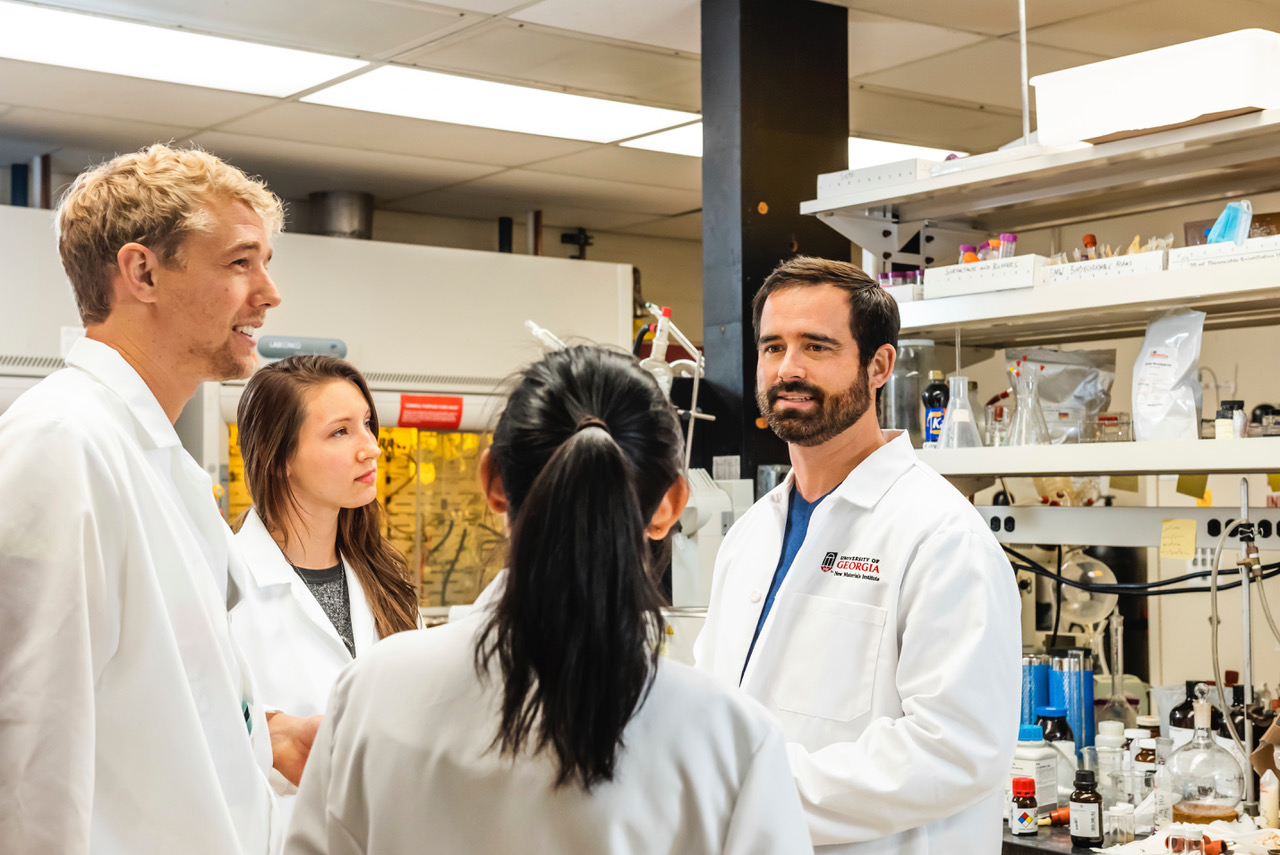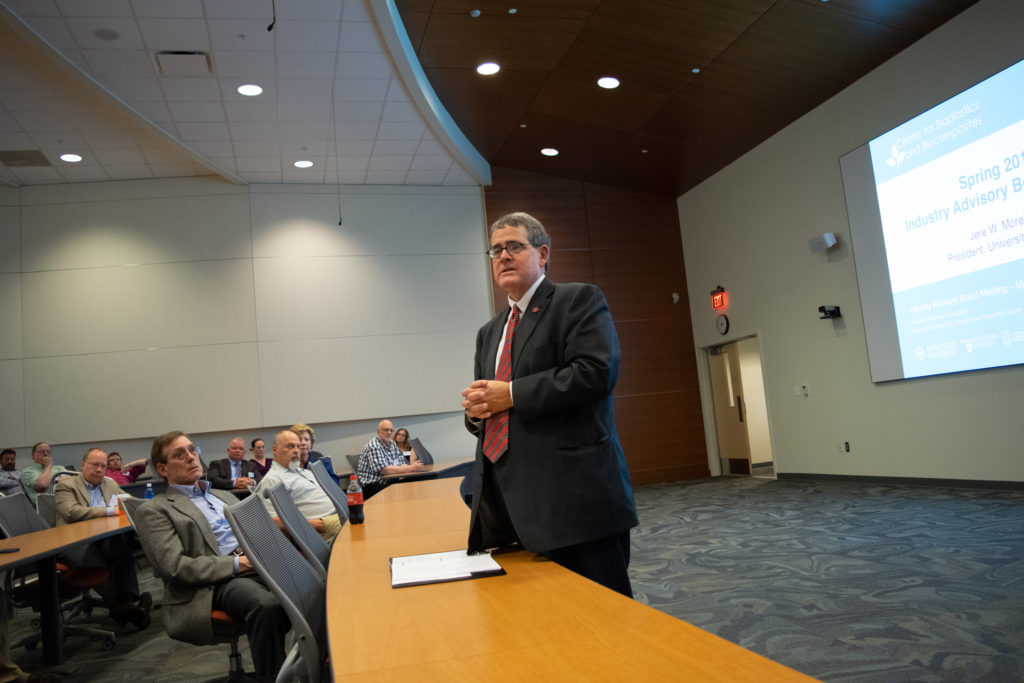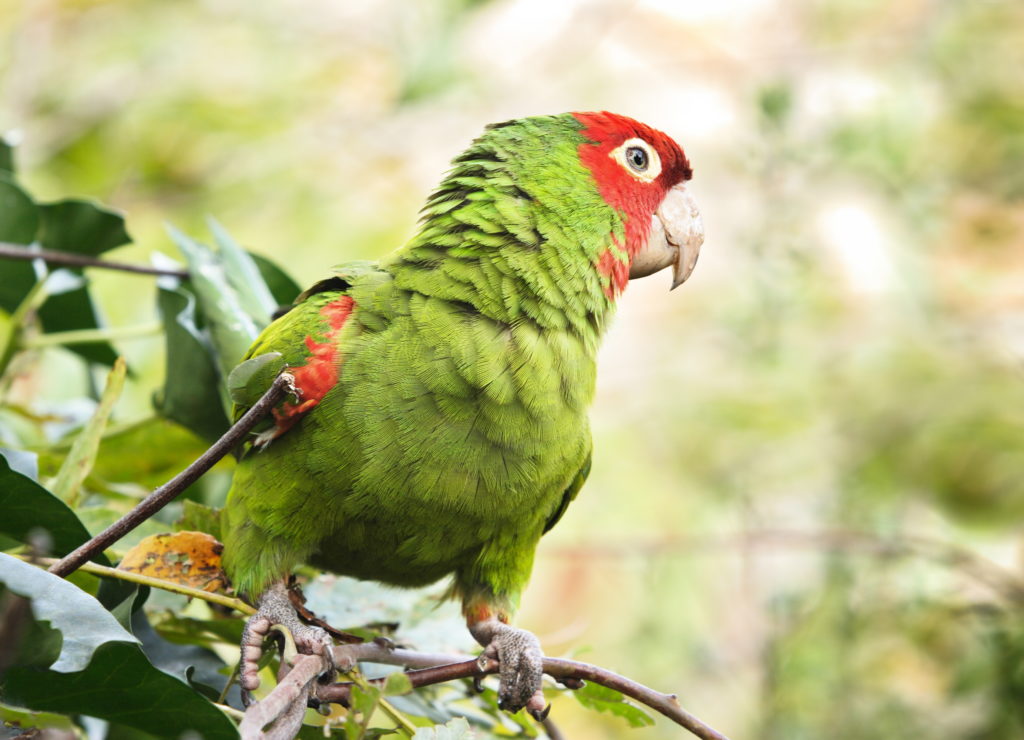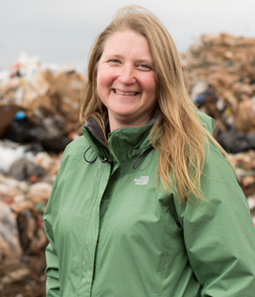UGA New Materials Institute recognized by Shaw Industries for sustainability efforts
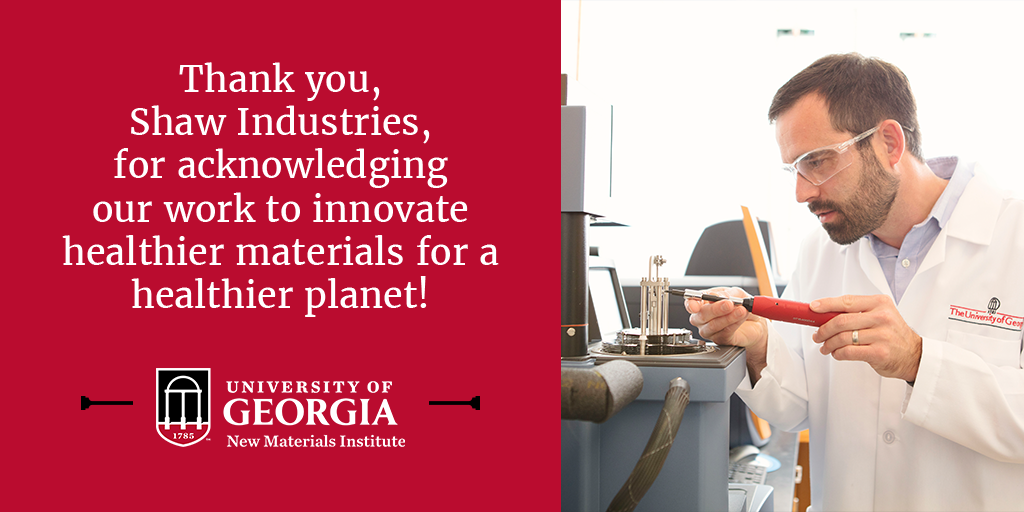
The University of Georgia’s New Materials Institute is one of 10 organizations to be highlighted over the coming year by Shaw Industries Group Inc., as part of the company’s new sustain[HUMAN]abilityTM recognition program.
“We are grateful to Shaw Industries for recognizing and highlighting our efforts in working with industry to design products with end-of-life in mind, that ultimately reduce waste and are safer for people, animals and our planet,” said Jason Locklin, director of the New Materials Institute.
Shaw’s program recognizes “diverse organizations intently focused on products and initiatives that support the wellbeing of people and the planet,” the company said in its press release. As part of the program, which launched in October, the New Materials Institute will be featured in a blog series posted on SustainableBrands.com. The blog posts will examine what drives the efforts of organizations like the New Materials Institute, the challenges these groups face, keys to success and what innovations are on the horizon.
Shaw Industries has partnered with the New Materials Institute to bring greater sustainability to their product line. The company also explores sustainability solutions with the Institute and its collaborators by being a member of the Industry Advisory Board for the National Science Foundation Industry & University Cooperative Research Center for Bioplastics and Biocomposites, known as CB2. The New Materials Institute serves as a research site for CB2, along with Iowa State University, Washington State University, and North Dakota State University.
Locklin and Kellie Ballew, a director of sustainability for Shaw Industries, are scheduled to co-present a session titled, “Shaw Industries Presents: A World of Plastics: Designing Practical Solutions,” at the Greenbuild International Conference and Expo.
Headquartered in Dalton, Georgia, Shaw is a global manufacturer of carpet, resilient flooring, hardwood, tile, stone, laminate, synthetic turf and other specialty items for residential and commercial markets worldwide. It is a wholly owned subsidiary of Berkshire Hathaway with nearly $6 billion in annual revenue.
The UGA New Materials Institute is committed to preventing waste through the design of materials and systems that adhere to Green Engineering principles. The Institute partners with industry and businesses to design materials for their use that are bio-based, fully biodegradable, or completely recyclable, and safe for people, animals and our planet. In addition, it works with businesses, governments, foundations and other organizations to redesign systems so that they generate less waste and promote circularity in materials management. The New Materials Institute is also shaping the future by training the next generation of scientists and engineers on the importance of considering Green Engineering design principles in everything they do. For more information, visit www.newmaterials.uga.edu.
Writer/contact: Kat Gilmore, kygilmor@uga.edu

